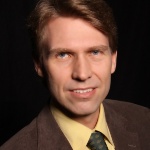Cosmic dust carries information about distant worlds through space and time. It may originate in our planetary neighborhood, for example the lunar surface, or in stellar nurseries throughout the galaxy. Like photons, the dust grains are messengers, giving us the opportunity to study the condition and composition of these objects.
The tools to analyze these particles are naturally somewhat different from the ones used in optical astronomy. In in-situ dust astronomy (the study of cosmic dust particles arriving at the observer), the instrument gets in physical contact with the foreign material. When we fly dust instruments aboard a space probe, we can “touch” the interstellar matter or the surfaces of planetary bodies. In this way, in-situ dust astronomy opens up a valuable complementary field within the astrophysics and planetary sciences.
The cosmic dust group at IRS develops technologies and entire instruments to measure these particles. Currently under development is the DESTINY+ Dust Analyzer, which will fly aboard the Japanese DESTINY+ spacecraft to interplanetary space. IRS also hosts the electrostatic dust accelerator, which can propel micron sized grains to cosmic velocities, in order to test and characterize dust instruments.
Contact

Ralf Srama
apl. Prof. Dr.-Ing.Lecturer in space physics

